In sports, digital marketing is key. It’s had a crucial role. It’s transformed how sports organizations connect with fans and drive fan loyalty. They craft experiences that deeply resonate with fans. They use data to make smart choices and improve marketing. They do this through innovative sports marketing campaigns, mobile apps, and content strategies.
Teams and athletes are using data to engage fans. They offer mobile-friendly websites and exclusive interviews. Fans can access the interviews directly from their mobile devices. This strategy helps sports entities drive engagement. It also ensures they can interact with fans in a meaningful way. This strengthens the bond between them.
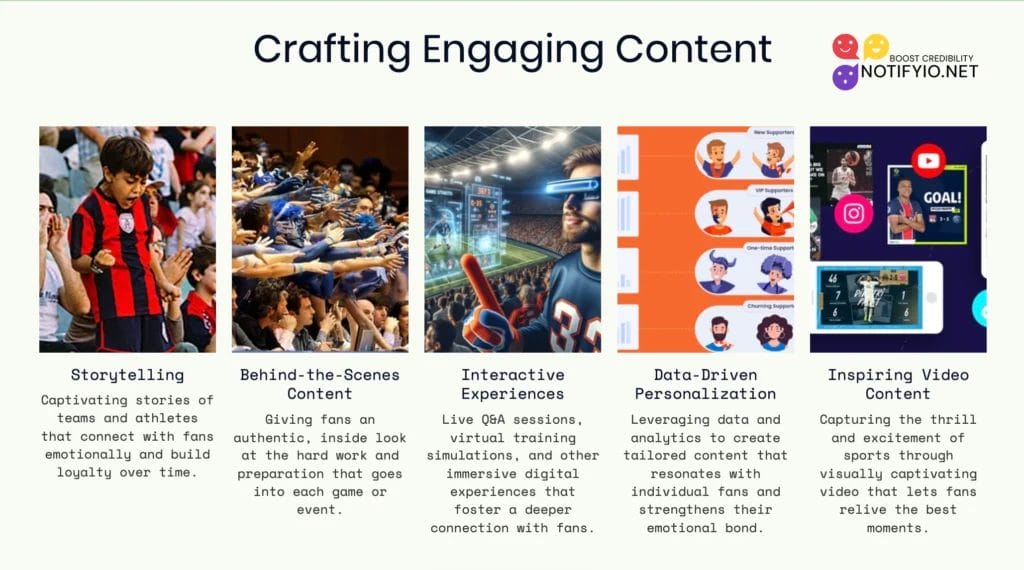
Dynamic World of Sports Digital Marketing
Today, sports organizations are using digital marketing to raise brand awareness. They also use it to engage fans and make money. With mobile apps, these organizations have found new ways to connect with fans. They also offer fans unique experiences that keep them coming back for more. Sports digital marketing changes a lot. Staying ahead means always evolving to captivate the audience.
Fans are more than just ticket buyers; they’re a community that needs fostering. Digital platforms allow sports organizations to share behind-the-scenes content. They let them engage in real-time with fans during games. And they help them drive ticket sales with targeted promotions. This approach has many sides. It has opened up new ways to make money and engage fans.
Also, digital marketing tools are versatile. They allow sports organizations to shape their strategies. They do this to meet the varied interests and needs of their fans. The opportunities to engage and excite fans are boundless. They include social media campaigns, email marketing, and more. Through these digital channels, sports entities can create personalized experiences. Fans cherish these experiences. They also deepen their loyalty to the team or athlete.
The main goal of sports digital marketing is to create a win-win. Fans feel valued and connected to their favorite teams and athletes. Sports organizations maximize their reach and revenue. They’re doing this by using digital platforms, mobile apps, and personalized content. They set new standards for fan engagement and community building online.
The Evolution of Digital Trends in Sports Marketing
Digital trends have changed sports marketing. They’ve brought in an exciting world of digital options. They’ve transformed sports and entertainment. Sports organizations now embrace digital platforms and video marketing. They use a range of digital tools to create an immersive universe. It’s offering fans inspiring and educational content. This shift shows a big change in how fans consume sports. It’s engaging them in ways that were once unimaginable.
The Rise of Social Media as a Game-Changer
Social media has changed sports marketing. It lets organizations engage with fans on a personal level. It helps them drive ticket sales through targeted strategies. It has helped sports organizations’ creators connect with the audience. It turns every game into a chance for fans to feel closer to their favorite teams and athletes.
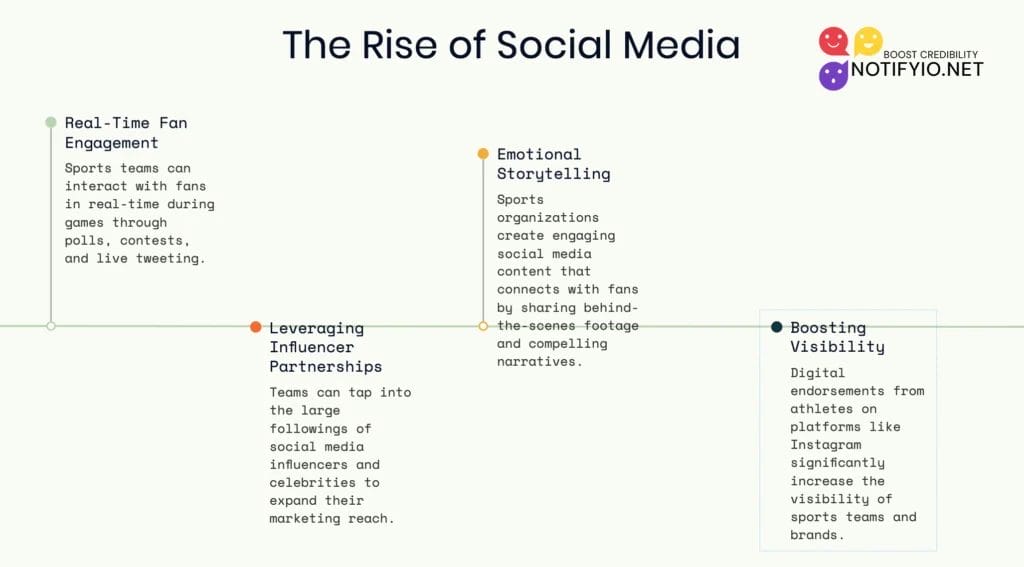
The Emergence of E-sports and its Global Influence
E-sports’ rise has marked a big shift in global sports. It has drawn a new generation of fans with its competitive and engaging format. E-sports is digital-first. Studies have shown that sports organizations can reach broader audiences. They can also reach more varied ones. They can do this through digital channels.
Mobile Optimization: Connecting with Fans on the Go
Sports organizations understand the importance of mobile optimization today. Fans demand instant content access in the fast-paced modern world. Through mobile apps, sports entities provide special content. They also provide interactive experiences to fans’ mobile devices. This focus is on mobile-friendly websites and apps. They ensure that fan engagement is seamless, easy, and accessible. It doesn’t matter where the fans are.
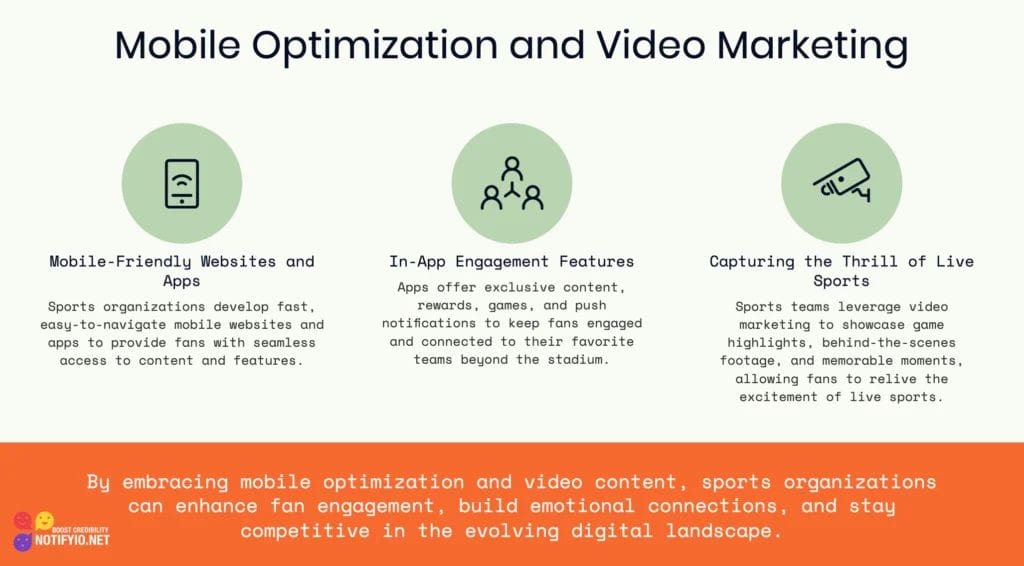
Video Marketing: Capturing the Thrill of Sports
Video marketing is now key for sports teams. They aim to capture the excitement and passion of sports. They can deliver great video content. It lets them show the excitement of live sports. This lets fans relive the best moments and feel closer to their favorite sports.
Understanding the Sports Marketing Industry in the Digital Age
In the digital age, the sports marketing industry has changed. It now focuses more on brand awareness, engaging fans, and making money. These three pillars are critical. They’re key to the success and survival of sports organizations. The organizations are in a highly competitive landscape.
Definition and Importance of Digital Marketing in Sports
Digital marketing in sports is a unique opportunity for teams and athletes. They can connect with fans on a personal level. They can create experiences that resonate. On digital platforms, organizations can interact with fans. They can forge strong bonds and improve marketing for fast growth. This strategy is key. It builds brand loyalty and ensures the success of sports.
Challenges Facing Sports Marketing Campaigns
Despite the opportunities, sports marketing campaigns face challenges. They must navigate the complex digital platforms. These platforms have fragmented and shifting audience attention.
Ensuring Data Privacy and Trust
Ensuring data privacy and trust is vital in the digital age. Fans are increasingly concerned about how their personal information is used. Sports organizations must put secure data first. They need to do this to keep their fans’ trust and protect their reputation.
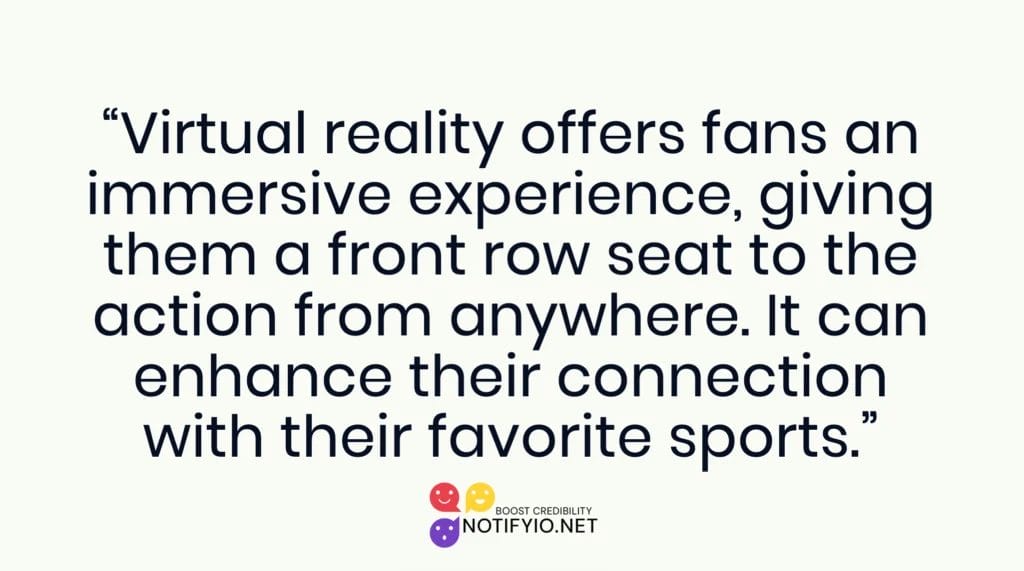
Cutting Through Information Overload
The world is full of information. Sports marketing campaigns must find new ways to cut through it. They must grab their target audience’s attention. This requires a strategic approach to creating and sharing content. It ensures that marketing messages are clear and are heard.
Engaging Diverse and Global Audiences
Sports marketing faces a unique challenge. It must engage diverse global audiences. This requires a deep understanding of market segments to drive engagement well. Sports organizations must adjust their strategies. They must do this to connect with fans from different cultures and places. They must make meaningful connections that go beyond borders.
Strategies for Engaging Sports Fans Digitally
Creating engaging content is central. It’s key to digital strategies that captivate sports fans. Craft content that resonates with the audience. This can help sports organizations. It builds a strong sense of community and loyalty among their fans.
Creating Personalized Fan Experiences
Personalized experiences are key to digital engagement strategies. They let sports organizations offer fans tailored content and interactions. This personal touch enhances the fan experience. It makes each interaction more meaningful and rewarding.
Utilizing Data-Driven Insights for Targeted Marketing
In sports marketing, the landscape is dynamic. Using data-driven insights is a cornerstone for crafting targeted campaigns. Marketers can study fan behaviors and preferences. They can use this to tailor their strategies to meet the exact needs of different fan bases. This approach boosts fan engagement. It also greatly improves marketing. It ensures that the right messages reach the right audience at the right time.
Developing Compelling Content Strategies
Engaging fans in sports starts with making great content. The strategies are designed to captivate and keep fans’ attention. They do this by providing them with value and relevance in every piece of shared content. The key is to know what the audience likes. This lets you make content they relate to.
Storytelling that Resonates with Fans
Storytelling is key to creating engaging sports marketing content. By telling the stories of teams and athletes, marketers can connect more with fans. These stories entertain, inspire, and build a loyal fanbase with triumphs and challenges. Good storytelling makes normal content into memorable experiences. Fans cherish and follow them with passion.
Behind-the-Scenes and Interactive Content
Fans crave authenticity and a closer connection to their favorite teams and athletes. It’s fulfilling this desire by offering behind-the-scenes footage and interactive content. This includes live Q&A or training sessions. This content lets fans see the hard work and dedication in every game. It creates a sense of belonging and deepens their loyalty to the team.
Leveraging Digital Platforms for Maximum Impact
In today’s digital age, using many online platforms is crucial. They are key for maximizing fan engagement. The shift from traditional to digital marketing offers sports marketers new chances. They can connect with fans globally. They can do this using innovative and interactive methods. This approach broadens the reach. It also creates many avenues for fan interaction.
Social Media Slam Dunks: Strategies for Twitter and Instagram
Social media platforms like Twitter and Instagram have revolutionized fan engagement. They offer unique chances for real-time interaction. Strategies, such as live-tweeting events and sharing exclusive content, keep fans engaged. So do conducting polls or contests. These things keep fans excited. These platforms are a bridge between fans and their favorite teams. They enhance the fan experience beyond traditional marketing.
Virtual Reality: Offering Immersive Fan Experiences
VR has opened new dimensions in fan engagement. It offers immersive experiences that bring fans closer to the action. Through VR, fans can watch exclusive interviews. They can also see training sessions. These provide a unique view of the sports world. This technology creates an unmatched sense of presence. It makes fans feel as if they’re part of the game or event. This happens no matter where they are.
Digital Fan Engagement Outside the Stadium
Engaging fans outside the stadium has become increasingly important in the digital age. They can do this through online communities, social media, and digital content. These let sports organizations stay connected to their audience. This engagement happens outside the stadium. It ensures the fan experience goes beyond game day. It fosters a year-round relationship with the sport and the team.
The Role of Mobile Apps and Gamification in Fan Engagement
Mobile apps and gamification have emerged as powerful tools for enhancing fan engagement. Mobile apps keep fans engaged. They do this by offering exclusive content, rewards, and interactive games. This keeps fans connected to their teams. Gamification does this by adding competition and achievement. This makes the fan experience more interactive and fun. These strategies use the fact that mobile devices are everywhere. They aim to keep fans closely connected to their teams.
The Role of Analytics and Data in Sports Marketing
The merger of analytics and data has changed sports marketing. It allows a more strategic approach to engaging fans and developing campaigns. By understanding fan behaviors and preferences, marketers can improve their efforts a lot. They can ensure that every marketing message is both relevant and effective.
Analytics as the Backbone of Sports Marketing Strategies
Analytics play a crucial role in shaping sports marketing strategies. The insights show how fans interact with content and connect with teams and athletes. They let marketers tailor their approaches for maximum relevance and engagement. Using data analytics helps make informed decisions. It also optimizes marketing messages. This ultimately drives fan loyalty and enhances the fan experience.
Audience Understanding and Personalization
Understanding the audience is key to personalizing the fan experience in sports marketing. Marketers can use data to learn about fan preferences and behaviors. They can then make custom content and offers that resonate personally. Personalization increases engagement. It also strengthens the emotional bond fans have with teams and athletes.
Performance Measurement and ROI Optimization
Measuring performance and optimizing ROI are essential aspects of digital sports marketing. By analyzing campaigns and strategies, marketers can refine their approaches. This will ensure maximum impact and efficiency. This continual optimization process lets us allocate resources to the best channels. It maximizes fan engagement and return on investment.
Predictive Analytics for Strategic Planning
Predictive analytics offer a futuristic view in sports marketing. They let marketers forecast trends and fan behaviors. By studying past and current data, marketers can predict what fans will like in the future. This lets them plan for upcoming campaigns. This proactive approach ensures that sports marketing stays ahead. It looks ahead to the needs and desires of fans.
Highlighting Successful Digital Marketing Campaigns in Sports
Studying successful digital marketing campaigns in sports demonstrates the power of innovation. It also demonstrates the power of planning. These campaigns are known for their creativity and effectiveness. They show that digital platforms and data insights can greatly improve fan engagement and brand loyalty. They can learn from these successes. This will let them keep evolving. The world of sports marketing is ever-changing and digital.
Nike’s Digital Endorsement Blitz and Audience Engagement
Nike has used digital endorsements well. They’ve done this to engage audiences. They’ve shown a smart mix of celebrity collaborations and interactive campaigns. Nike uses the large followings of athletic superstars. They use platforms like Instagram and Twitter. They craft stories that deeply connect with sports enthusiasts and casual fans. This approach boosts their marketing reach. It also fosters community among consumers. It encourages an interactive dialogue through social media comments and shares. These digital initiatives show Nike’s commitment. They’re not just about selling products. They’re about building an active sports culture.
The Impact of Virtual Reality on Fan Experiences
VR has changed how fans experience sports. It offers them a front-row seat to the action from home. This technology lets groups engage with supporters in new ways. It creates immersive experiences that copy the excitement of being at a stadium. Through VR, fans can now feel the rush of a game-winning goal or the intensity of a buzzer-beater shot. They feel as if they were there. This greatly enhances their connection to the sport and team they love.
Beyond Traditional Broadcasting: VR Game Highlights
It expands beyond the live game. Virtual reality offers a new way to watch sports highlights. It gives fans a 360-degree view of key moments. This format lets viewers see epic plays and game-turning points from many angles. It gives a full understanding of the action. It’s a big change from traditional broadcasting. It’s a more engaging way for fans to consume sports content. Highlights of VR games are quickly becoming a favorite feature among sports fans. They promise a future where every fan has a virtual seat at every game.
The Significance of E-sports Marketing in Attracting Young Demographics
E-sports marketing has carved out a big niche. It attracts young people and turns interactive experiences into a powerful engagement tool. This digital arena engages young audiences. It does this by tapping into their love of gaming. It creates a bridge between traditional sports fans and the digital generation. E-sports provide brands a unique way to connect with a demographic that values dynamic content. They do this through innovative marketing strategies, making it crucial to modern sports marketing.
The Future of Digital Marketing in Sports
The exciting world of digital transformation in sports marketing is set to redefine how brands interact with fans. Video marketing, sports management, and techniques for creating relevant content are integrating. They’re geared towards the relationships between fans and their favorite teams or athletes. This integration will deepen the closeness. It includes both professional and amateur activities like running or cycling. It also includes non-professional athletes in marketing. Digital marketing is making sports participation and fan engagement democratic at an unprecedented scale.
Digital Trends Shaping the Future of the Sports Industry
Digital trends are the driving force behind the evolving landscape of the sports industry. Video marketing and digital transformation are merging. This is happening in sports management and marketing. It is creating many chances to engage with the audience. Over 400 million people take part in digital interactions. They range from professional events to amateur running or cycling. The future of sports is becoming more inclusive for non-professional athletes. It’s fostering a global sense of community and engagement.
The Growing Importance of Influencer Marketing in Sports
In sports, influencer marketing is a key digital strategy. It connects brands with audiences in a more real and engaging way. Influencers are popular and trusted by their followers. Brands can use this trust to make campaigns that resonate with fans. This drives engagement and loyalty. This approach boosts brand visibility. It also personalizes the fan experience. It’s a key part of the sports industry’s digital marketing playbook.
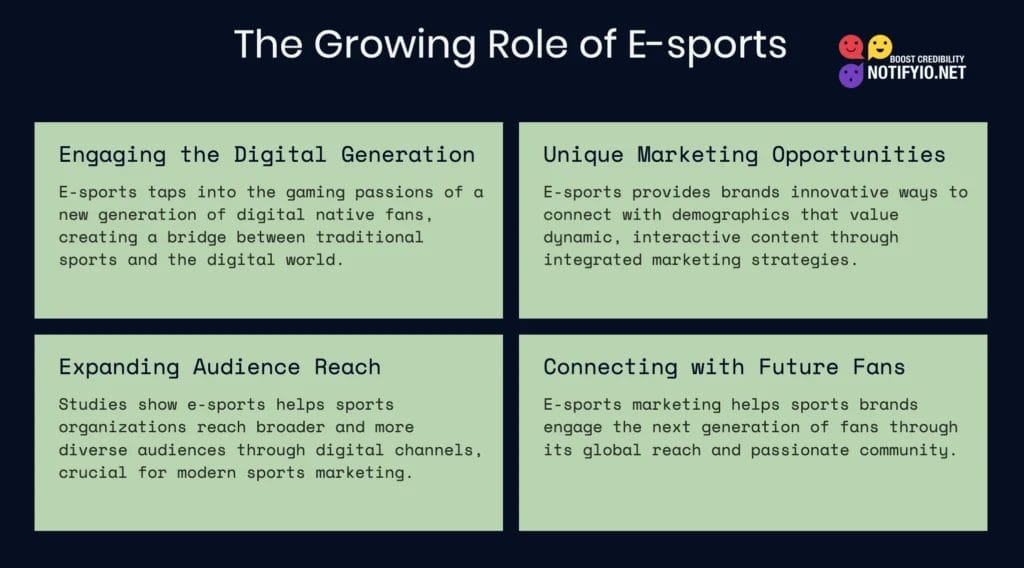
Anticipating the Next Big Thing in Sports Digital Marketing
The digital landscape keeps changing. Predicting the next big thing in sports marketing is crucial. It helps you stay ahead in digital marketing. New marketing strategies will be shaped by tech innovations and shifts in consumer behavior. Success will require adaptability and foresight. Brands can use new trends and stay near their audience. They’ll lead in shaping the future of sports marketing.
FAQs on Digital Marketing in Sports
Understanding the details of digital marketing in sports can help fans and brands. It can help them navigate the complex world of modern sports engagement.
How Do Digital Endorsements Benefit Athletes and Brands?
Digital endorsements are mutually beneficial for athletes and brands. They enhance visibility and credibility. Athletes gain a platform to connect with fans. They also showcase their brand. Companies use the athletes’ influence to reach targeted audiences. This partnership boosts the athlete’s profile. It also drives brand loyalty and consumer engagement. It shows the power of digital connections in sports.
Why is Data Considered Crucial in Developing Sports Marketing Strategies?
Data is crucial in making sports marketing strategies. It offers insights that help tailor campaigns to meet the needs of different sports groups. By analyzing data, marketers can develop a sports marketing strategy. It will resonate with their target audience, making sure it’s relevant and engaging. This data-driven approach helps brands optimize their marketing. It delivers personalized experiences. These captivate fans and drive engagement.
How Has Virtual Reality Enhanced the Sports Fan Experience?
Virtual reality (VR) has changed the sports fan experience. It does this by offering immersive and interactive experiences. These experiences transport fans into the heart of the action. You can watch live games with a 360-degree view in VR. You can also feel what it’s like to be on the field. VR creates a unique feeling of being there and of engagement. This technology improves viewing. It also opens new ways for fan interaction. It’s a game-changer in sports marketing.
The Rising Popularity of E-sports in Digital Marketing
E-sports are becoming more popular in digital marketing. This shows that the landscape of sports fan engagement is shifting. Younger demographics are digital natives. They’re increasingly drawn to the interactive and competitive nature of e-sports. This creates a big opportunity for brands. They can tap into a highly engaged and growing audience. E-sports marketing connects sports brands with the next generation of fans. It’s global reach and passionate fan base make it an essential part of digital marketing.
Characteristics of a Successful Digital Marketing Campaign in Sports
A successful digital marketing campaign in sports engages fans. It does this through personalized and interactive content. Brands can use data-driven insights. They can use them to create targeted marketing. This marketing connects with their audience. Also, successful campaigns often use storytelling. It connects with fans emotionally. They also add behind-the-scenes and interactive content. This content brings fans closer to their favorite teams and athletes. These elements are combined to make campaigns. The campaigns thrill sports fans and create a lasting connection.
Navigating the Future: Concluding Thoughts on Digital Marketing in Sports
The global sports sector grows fast. The future of digital marketing in sports looks bright. It’s not just promising but also full of endless possibilities. The integration of digital activities into the digital marketing plan has become imperative. It’s about using the power of influencers and buyers. It’s about understanding the famous 4Ps (Product, Price, Place, and Promotion). And it’s about using the digital realm to engage with a worldwide audience better. Sports is at a key point. Here, tech and fan strategies will determine digital marketing success. Navigating this changing landscape requires creativity and analytics. You also need a deep understanding of digital platforms. These are needed to captivate and keep fans across the globe.
- About the Author
- Latest Posts
Donna Lara is a versatile content contributor at Notifyio. It focuses on online marketing and business growth. Lara has a lot of knowledge and experience in digital marketing. She uses it to create helpful content. Her articles cover many topics. These include social proof, search engine optimization (SEO), content marketing, and other topics.






